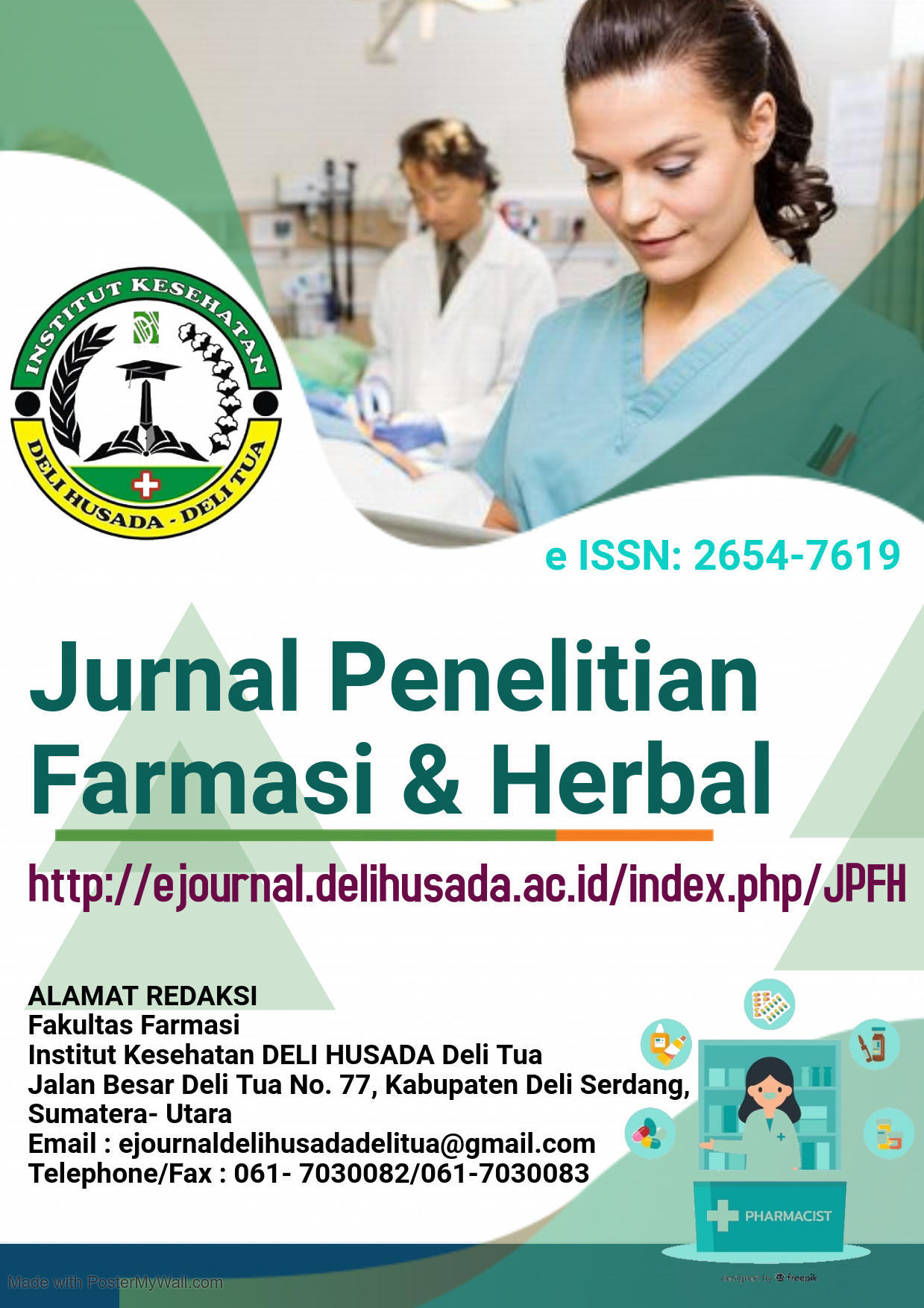FORMULASI SEDIAAN SALEP KOMBINASI EKSTRAK ETANOL DAUN NANGKA (Artocarpus heterophyllus Lam.) DAN DAUN KERSEN (Muntingia calabura L.)TERHADAP PENYEMBUHAN LUKA TERBUKA PADA TIKUS JANTAN PUTIH TAHUN 2022
Abstract
Background: Wounds are damage to part of body tissue or damage to tissue components, where there are damaged or missing tissue substances. Jackfruit leaves (Artocarpus heterophyllus Lam.) contain secondary metabolites, namely, flavonoids, saponins and tannins. Flavonoids function as antibacterial and reduce inflammation in wounds. Saponins to trigger the formation of collagen. While the tannins function as an antibacterial.
Cherry leaves (Muntingia calabura L.) contain several active compounds such as flavonoids, saponins, and tannins. Compounds that function as anti-inflammatory are flavonoids. These compounds can accelerate wound healing because it has anti-inflammatory activity.
Objective: to determine the concentration of the combination ointment of jackfruit leaf and cherry leaf ethanol extract in the form of an ointment that is most effective in healing open wounds. Method : Experimentally. Samples using jackfruit and cherry leaves were taken purposively, extracted by maceration using 96% ethanol as a solvent made in the form of a thick extract. Then the thick extract was made into an ointment with a ratio of 1:2, 2:1 and 2:2 as well as positive control (bacitracin ointment), negative control (ointment base). open wound for 14 days. Results: The results of the open wound healing study had the best effectiveness, namely bacitracin ointment (0 cm), a combination ointment of jackfruit leaf and cherry ethanol extract 2:2 (0.10 cm), 1:2 (0.25 cm) and 2 :1 (0.28 cm) then ointment base (0.55 cm). Conclusion : The preparation of ointment combination of jackfruit leaf ethanol extract and 2:2 cherry is more effective in the treatment of open wounds.
Downloads
References
Atik, N., Januarsih Iwan A.R., 2009, Perbedaan Efek Penyembuhan Topikal Gel Lidah Buaya (Aloe vera L.) dengan Solusio Povidone Iodine terhadap Penyembuhan luka sayat pada kulit mencit (Mus musculus), Artikel Penelitian, Unpad, Bandung.
Graff, J.A., dan Sarff, R. 2012. EMS for secure Facilities Delma Cangange Learning. Clifton Park pp. 130-131.
Kaplan NE, Hentz VR. 1992. Emergency Management of Skin and Soft Tissue
Wounds, An Illustrated Guide, LittleBrown. Boston : USA.
Kusumawati, E., Apriliana, A., & Yulia, R. 2017. Kemampuan Antibakteri
Ekstrak Etanol Daun Nangka (Atrocarpus heterophyllus Lam.) Terhadap
Escherichia coli. Jurnal Sains Dan Kesehatan, 1(7), 327–332.
Manik, D. F., Hertiani, T., & Anshory, H. 2014. Analisis Korelasi antara Kadar
Flavonoid dengan Aktivitas Antibakteri Ekstrak Etanol dan Fraksi-Fraksi
Daun Kersen (Muntingia calabura L.) terhadap Staphylococcus aureus.
Khazanah.
Parampasi, N., dan T. Soemarno. 2013. Pengaruh Pemberian Ekstrak Daun
Pepaya dalam Etanol 70% pada Proses Penyembuhan Luka Insisi.
Departemen Patologi Anatomik, Fakultas Kedokteran Universitas
Airlangga. Surabaya.
Primadina N, Basori A, Perdanakusuma DS. Proses Penyembuhan Luka
Ditinjau Dari Aspek Mekanisme Seluler Dan Molekuler. Qanun Medika.
2019;3(1):31-42.
Priyandari Y, Maulidah SAT. Getah Pohon Jarak (Jatropha Curcas) Topical
Mempercepat Lama Penyembuhan Luka Eksisi Mencit (Effect Of
Jarak Tree Topical Increase Wound Healing Excision Period Of
Mice). Journals Ners Community. 2015;6(2).
Pusponegoro AD. Luka Dalam Buku Ajar Ilmu Bedah Edisi Ke-2. Jakarta: EGC, Penyunting: sjamsuhidrajat R, De Jong W. 2005.
Usman, W., Jada, M., & Jideofor, R. 2014. In vitro Antimicrobial Activity of
Crude Tannins Isolated from the Stem Bark of Annona senegalensis. British Biotechnology Journal, 4(11), 1175–1181







